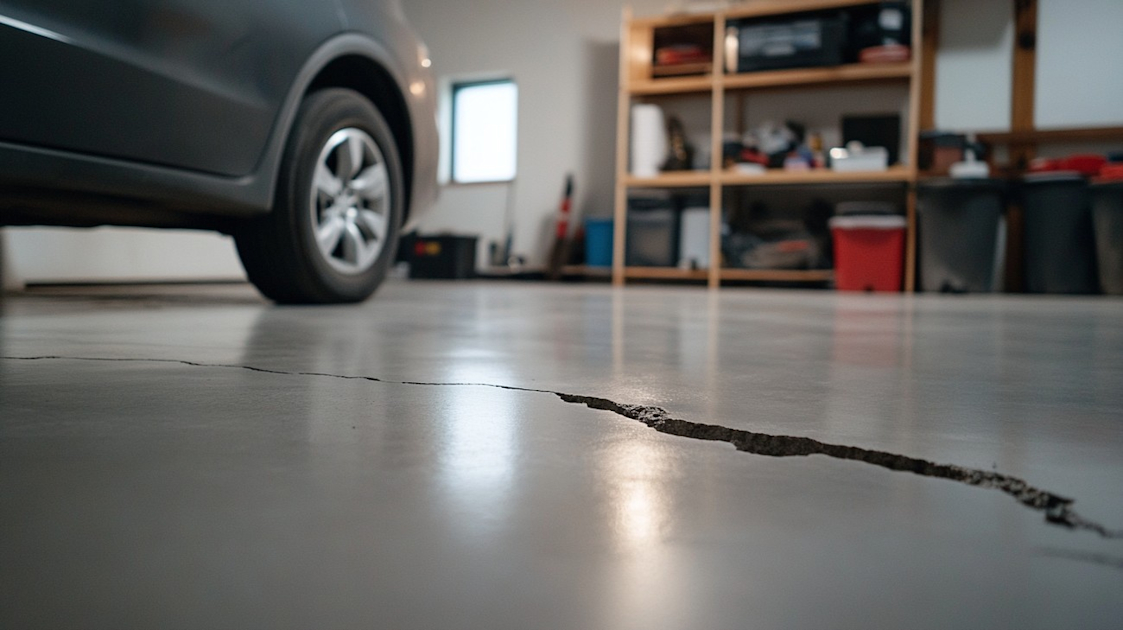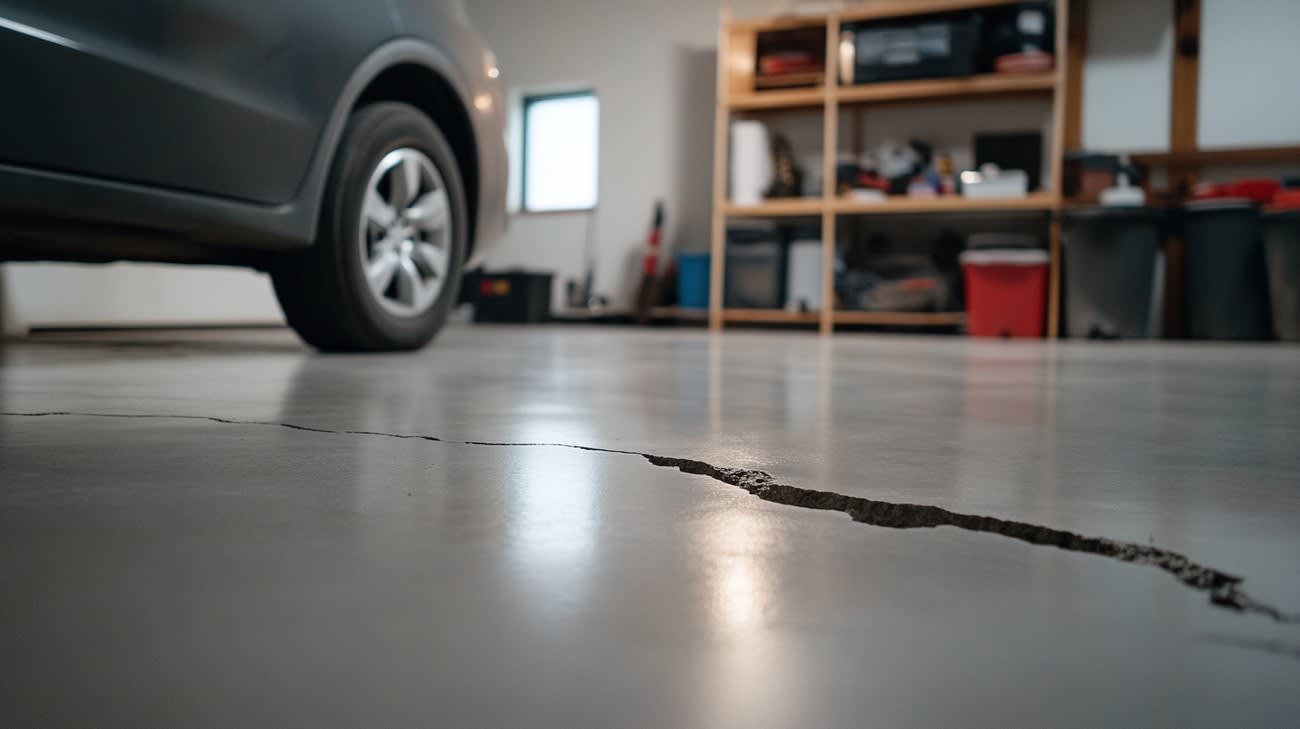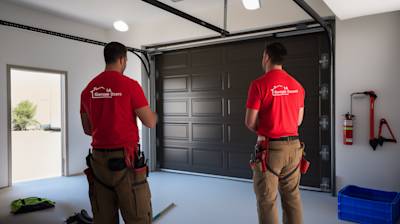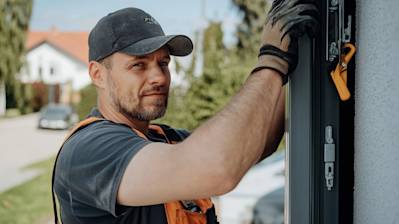Maintaining the structural integrity of a garage floor is critical for not only the longevity of the floor but also the safety of those using the space. Garage floor crack repair, can often seem like a daunting task, but with the right tools, materials, and guidance, it’s an achievable DIY project that can save you a significant amount of money. This article will walk you through an elaborate process of managing cracks on garage floors. We’ll cover everything from understanding the root causes of the odd crack in your garage floor to the best methods to repair them.
Understanding the Garage Floor Crack Issue
Before jumping into the crack repair process, it's vital to first understand why cracks appear on the floor of your garage. The appearance of cracks on concrete floors isn't a rare phenomenon -- they are often an inevitable consequence of concrete curing or changes in the environment. However, certain types of cracks can indicate more serious underlying issues, such as foundation problems.
The Nature of Concrete: Shrinkage and Expansion
Concrete comprises water, aggregate (rock, sand, or gravel), and Portland cement. As the water evaporates from the concrete, shrinkage occurs, often resulting in cracks. This is completely natural and can occur soon after the concrete has been poured and finished. Additionally, concrete can also expand and contract with changes in temperature, contributing to crack formation.
Excessive Load and Impact
A garage floor is subjected to heavy loads, whether it's your vehicle, storage items or heavy machinery. Constant heavy loads or sudden impacts (like dropping a heavy object) can introduce cracks in the concrete.
Assessing Garage Floor Cracks
Before you can repair a crack, you first need to assess it to determine what type of repair will be required.
Evaluating Crack Width and Depth
Hairline cracks are typically less than an eighth of an inch wide and do not represent a structural concern. They can easily be repaired with a concrete sealer. However, if the crack is wider than an eighth of an inch, it may require a more serious repair method such as epoxy injection or routing and sealing. Deep cracks extending through the thickness of the slab may also signify structural damage.
Identifying Crack Direction
Cracks that are running across the width of the garage floor, or diagonally in an irregular fashion, may suggest that concrete shrinkage has occurred, while longitudinal cracks running along the length of the garage floor may be an indication of settling or drooping in the garage floor slabs.
Steps for Garage Floor Crack Repair
Now that we’ve understood the possible causes of the cracks and evaluated them, let’s move onto the repair process.
Cleaning the Area
The first step to garages floor crack repair is a thorough cleaning. Dust, debris or loose concrete around the crack can hamper the repair process.
Selecting Your Repair Material
Based on the degree of the damage, the right repair material should be selected. For hairline cracks, a concrete sealer would suffice. For larger cracks, using an epoxy resin filler or a concrete patch could be necessary.
Applying the Repair Method
For hairline cracks, once the area is clean and dry, apply the concrete sealer into the crack filling it up. For larger cracks, you’d need to apply the epoxy resin filler or concrete patch. It is important to follow the manufacturer’s instructions to get the job right.
Curing the Repair
For the repair to fully set and attain its maximum strength, it must be allowed to cure. Curing times vary among products, so make sure to check the instruction of the repair material.
Maintaining Your Garage Floor Post Crack Repair
Post repair, it is important to keep some maintenance methods in mind to prevent future cracks or damage.
Sealant Application
Applying a good quality concrete sealant can provide a protective layer to your garage floor, guarding it against moisture and chemical spills.
Regular Cleaning
Garage floors can collect a significant amount of dirt, dust, and grime. Through regularly cleaning, you can retain the integrity of the flooring, mitigating the risk of future cracks.
Avoiding Heavy Impacts
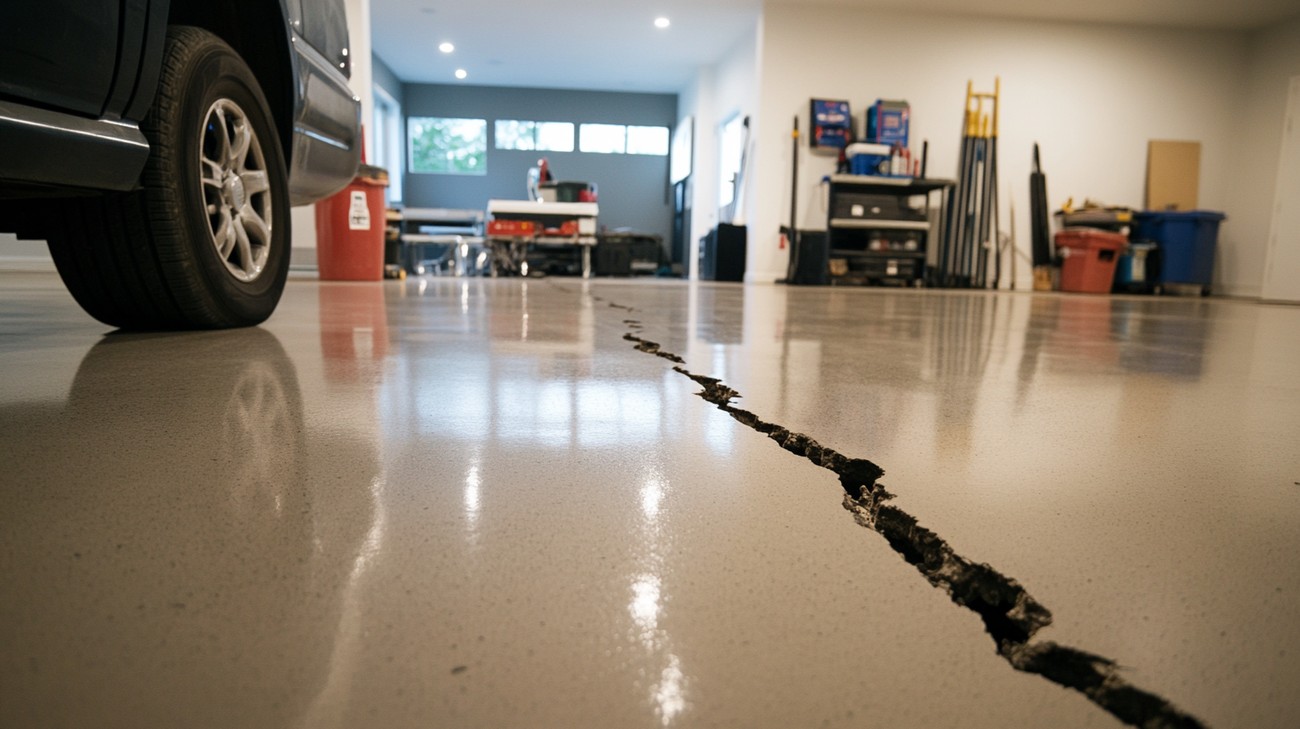
Frequently Asked Questions about Garage Floor Crack Repair
How can I prevent cracks on my garage floor?
While it is impossible to completely prevent some cracking due to the natural process of concrete shrinking, you can minimize the likelihood of large, harmful cracks in your garage floor. Start with a well-prepared and compacted subgrade, follow up with control joints appropriately placed to control where cracks occur, and add a good quality sealant to help reduce moisture absorption.
What are some signs that my garage floor needs repair?
The most glaring sign that your garage floor needs crack repair is, of course, visible cracking. Apart from this, stains from chemicals, oil or other car fluids are signs that your garage floor could use repair. Pitting, flaking or a flaky surface are also indications that repair and resurfacing could be necessary.
What should I do if I see a crack on my garage floor?
If you notice a crack on your garage floor, the best course of action is to take care of it as soon as possible. The longer you ignore it, the worse the crack can get, leading to not only a less aesthetically pleasing garage floor but also a host of other potentially more serious problems down the line.
How do I fix minor cracks on my garage floor?
Minor cracks in your garage floor can be fixed by filling in the crack using a concrete repair compound or epoxy. Use a wire brush to clean out and prepare the crack before applying the garage floor crack repair compound. Smooth out the compound to match the surface of the floor before letting it cure and dry.
Can I do garage floor crack repairs by myself?
Yes, with minor cracks, you can do the garage floor crack repair yourself. Home improvement stores offer a variety of garage floor crack repair kits that can be easily used. Just be sure to follow the instructions provided by the manufacturer to ensure the best results.
When should I call a professional for garage floor crack repair?
If the cracks on your garage floor are wide or deep, or if they continue to return after you have filled them in, it would be a good idea to call a professional. They have the skills and equipment to diagnose and fix compound issues that DIY kits may not cover.
Can I still use my garage when the floor is being repaired?
During the garage floor crack repair process, it is best to keep your garage empty. This includes cars, bikes, tools or any storage items. Once the repair and the sealant are dry, you can use the garage as usual.
How much does garage floor crack repair cost?
The cost for garage floor crack repair varies depending on the extent of the crack and whether or not you hire a professional to do the job. DIY garage floor crack repair can cost as little as $50 - $100, but professional repairs for larger, more complex cracks can range from $500 to $1,000 or more.
How long does garage floor crack repair last?
The longevity of the garage floor crack repair depends on many factors like the quality of the repair material used, the preparation and application process, and ongoing floor maintenance. With proper application and care, DIY repairs can last several years, while professional repairs can last much longer.
What else can I do to maintain my garage floor after repair?
After completing the garage floor crack repair process, it is a good idea to apply a high-quality sealant to the entire floor. This not only creates a barrier that can prevent future cracks, but also protects against staining, wear, and moisture. Regular cleaning can also prevent buildup of damaging chemicals and debris.
How long does it take for a garage floor crack repair to dry?
The drying time for garage floor crack repair varies based on the product used and the local climate. However, most products require at least 24 hours to cure. It's always best to follow the manufacturer's instructions on the product used for the most accurate drying times.


Myths and Misconceptions about Garage Floor Crack Repair
There are numerous myths and misconceptions surrounding the topic of garage floor crack repair, which can cause misunderstandings and even lead to incorrect actions being taken. This can result in poor quality repairs or the unnecessary expenditure of time and money. The following sections will debunk the most common myths and misconceptions associated with garage floor crack repair.
Myth 1: Garage Floor Cracks are Merely Aesthetic Problems
It's erroneous to believe that cracks in your garage floor are only about visual appeal. In reality, cracks can signal structural issues.
Ground Movement
For instance, severe cracks could suggest excessive ground movement beneath the concrete, which may be due to soil erosion, or shifts in the earth as the seasons change. When such movement occurs, it can apply substantial pressure on the concrete, leading to material failure and the formation of cracks.
Moisture Issues
Similarly, cracks facilitate moisture penetration, leading to additional problems. Moisture can lead to the corrosion of the rebar or wire mesh reinforcing your concrete (if present), causing expansion and further cracks. When in winter, the water trapped in the cracks can also freeze and expand, leading to more cracks or worsening existing ones.
Therefore, garage floor cracks could be pointing towards considerable structural issues that need immediate attention.
Myth 2: All Garage Floor Cracks Can Be Fixed Using DIY Kits
While DIY kits seem comfortable and budget-friendly, they might not be the optimal solution to all kinds of floor cracks. These kits generally comprise of epoxy resin, a popular choice for repairing hairline cracks, or minor non-structural damage.
Understanding Crack Severity
However, if the crack on your garage floor is more than 1/4 inch wide, has an uneven surface, or extends across the entire floor, you might need professional help. Such cracks can indicate severe structural damage that DIY kits are not equipped to address effectively.
Dependence on Expertise
Moreover, effective use of a DIY kit also depends on the user's skills and familiarity with concrete repair techniques. Even with a minor crack, a poor repair job can cause recurring problems.
Myth 3: Garage Floor Cracks Indicate Poor Construction Quality
It's a widespread misconception that garage floor cracks always point to shoddy construction work—though, in some cases, this might be true.
Concrete Shrinkage
Concrete mix shrinks as it dries, leading to surface tension that can result in small, superficial cracks. These cracks do not indicate poor construction; rather, it's an expected result of the natural curing process.
Unavoidable Ground Movement
Moreover, occurrences like ground movement or thermal expansion and contraction are beyond the control of construction workers and can cause cracks in an otherwise well-built garage floor.
Myth 4: Repaired Cracks Will Never Reopen
Unfortunately, this is not entirely true. Despite having repaired a crack effectively, there might be external factors that lead to the recurrence of the fault in your garage floor.
Accuracy in Determining Underlying Causes
The accuracy in determining the cause of the crack indeed plays a significant role in preventing its recurrence. If the cause was not accurately diagnosed, or if the repair was executed with the wrong method or materials, the repaired crack may reopen.
Environmental Factors and Use
Unforeseen environmental factors, overuse, and poor maintenance can also stress the garage floor leading to the reopening of repaired cracks.
In summary, while every repair aims to permanently fix the crack, several factors can cause them to reappear, even after an accurate and professional repair job.
Myth 5: Cracks Require Immediate Replacement of the Garage Floor
While some may rush to replace the entire garage floor, small and superficial cracks typically require only repair, not replacement.
However, if the cracks are wide, deep, or widespread—indicating structural damage—replacement might be the appropriate route. It's recommended to consult with a professional to correctly assess the situation.
Summary
Repairing floor cracks in your garage is no rocket science, especially if you've got the right materials and guidance. We've shared a few practical tips and steps to fix those unsightly damage marks. Thus, a proper Garage Floor Crack Repair not only helps in maintaining a clean and attractive look of your space but also extends the overall lifespan of your garage.
The beauty of Garage Floor Crack Repair is that you don't need to be a professional to do the job right. Even amateurs can execute it perfectly with a well-detailed guide like this. So, whenever you notice any crack, don't turn a blind eye. Instead, believe in the DIY spirit, get the necessary materials, and start restoring the strength and beauty of your garage floor.
Remember folks, a stitch in time saves nine. An effective garage floor crack repair is a preventive measure that saves you from future troubles. Ignored cracks can slowly lead to extensive damages over time: water infiltration, worsening of the crack, or even structural issues. So, don't hesitate to take action today. Keep your garage floor in its top form with timely repairs, and enjoy a worry-free and fabulous looking garage.
About 1A Garage Doors
1A Garage Doors is a family-owned and operated company located in the heart of Sacramento, CA. With a strong commitment to providing high-quality service to our community, we specialize in a wide variety of garage door services. From installations and repairs to maintenance and replacements, our team of seasoned professionals is your go-to for all your garage door needs. Built on the values of integrity, reliability, and excellence, 1A Garage Doors takes immense pride in delivering superior workmanship. We listen closely to your needs, ensure all our jobs are completed promptly and aim to leave every customer 100% satisfied.

